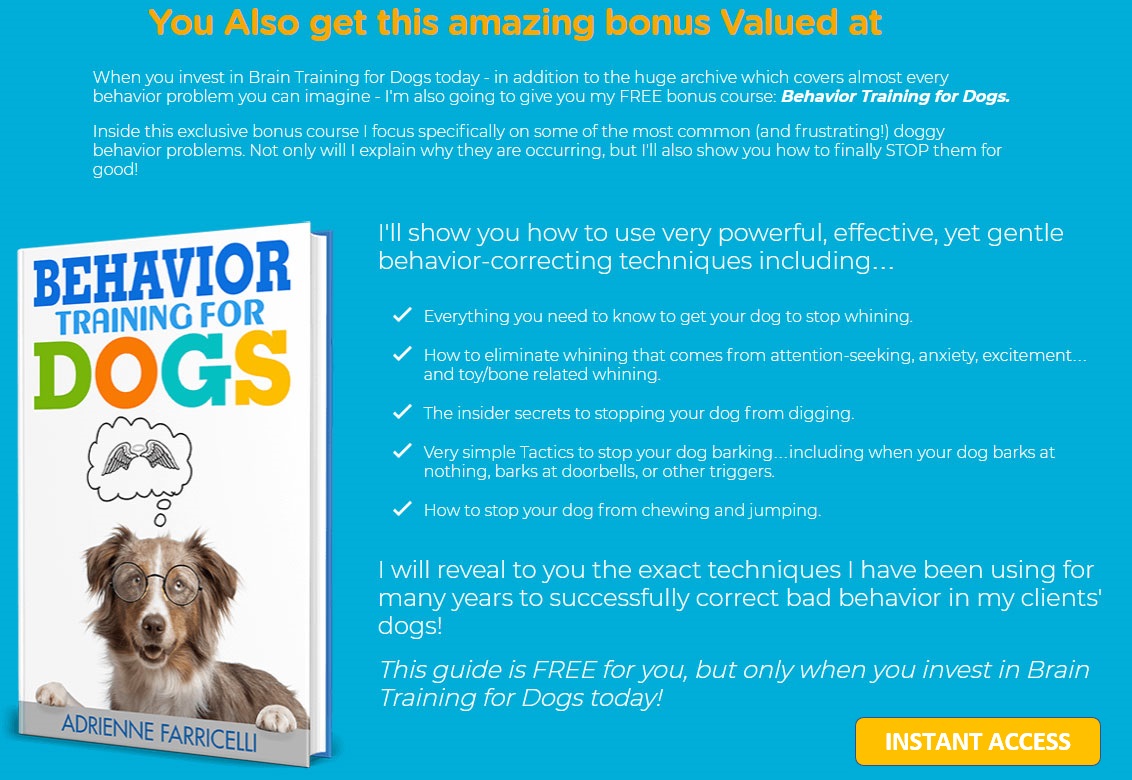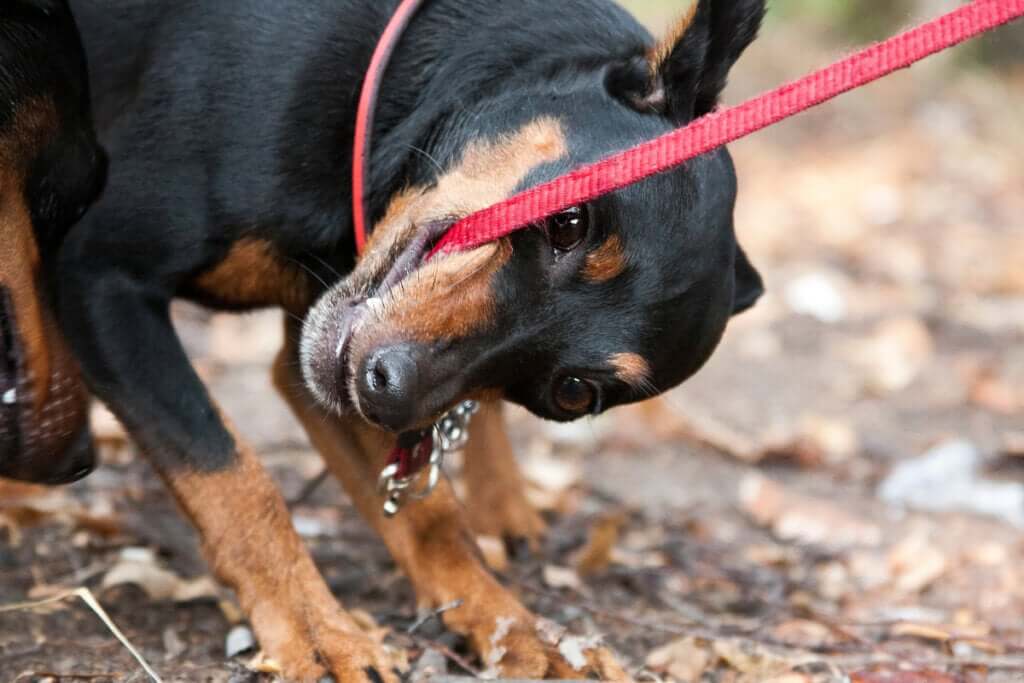Why does my dog bite the leash when walking
Your dog is biting his leash, you don't understand why and you can't walk him without the leash being put to the test? Are you getting tired of always having to buy new leashes and your dog's budget is starting to explode?
Then you will find all the answers to your questions here! After reading this article, you will know why your dog is chewing on his leash and how to stop this behavior!
Why does my dog bite on his leash?
As for any problem resolution, it is essential to know the cause in order to find an effective solution and especially one that is adapted to the real problem you are experiencing with your dog.
Because in many cases, the majority of them, a simple behavior hides a real problem, even a deep disorder that it will be necessary to identify in order to solve the problem on the long term.
And yes, "in the long term" is the most important notion in education because it is quite possible to stop a behavior but if it is only the symptom of a deeper disorder, then the problem will reappear and you will always be confronted with the same difficulties. I invite you to contact a professional dog behaviorist in order to identify the problem you are facing with your dog.
Here are the main reasons why a dog may bite its leash to help you identify the problem:
• For puppies, chewing is a natural behavior for teething and jaw strengthening. The leash (often made of rope or leather) is a perfect way to meet both of these needs for the puppy.
• A dog may chew on his leash to get the attention of his owner, who will undoubtedly give his dog his undivided attention in an attempt to stop this behavior.
• A dog that has not been out/exercised enough will also have trouble channeling his energy and may lash out at his leash.
• A dog that is walked very little on a leash may also start biting the leash to regain its freedom.
• A dog that is bored or finds the time too long will also tend to chew on its leash to simply find something to do.
• Finally, a dog that wants to play may also make this clear by chewing on his leash and trying to get into a play session (i.e., by tugging) with his owner.

My dog is biting his leash: what should I do?
To know what to do, you must first identify why your dog is biting his leash. Once this is done, here are the tips for each of the reasons mentioned above.
My puppy bites his leash to teethe:
If your puppy is teething, it is perfectly normal and should not be stopped. You should not stop the behavior but rather divert it to a new one, such as chewing on a toy.
My dog bites his leash to get my attention:
If your dog chews on his leash to get your attention, you will easily see it! Indeed, on several occasions, as soon as he chews his leash, ignore him completely. As a reminder, ignoring a dog means: not looking at it, not touching it or talking to it. Ignore your dog systematically when he bites his leash, if he finally stops, it's a win, if he continues, it's because another problem needs to be solved. You should also make sure to reinforce good behavior. So, as soon as your dog stops biting his leash, reward him warmly so that he makes the following association: "I bite my leash, I don't have social interaction with my owner, when I am calm, my owner is interested in me and offers me interaction. "Bingo!
My dog bites his leash to get rid of his excess energy:
If your dog is biting his leash because he is not sufficiently exercised and the time of the walk is too exciting for him... The answer is in the statement as they say: you must walk your dog more and exercise him more! Don't wait until your dog is untenable to propose activities to him, because by doing so, first of all you are teaching your dog to beg for attention, but above all you are not in charge of the activities you propose to your dog. And this is absolutely not coherent because you become completely dependent on your dog and "at his service" in a way. Instead, propose regular and daily outings to your dog, play sessions, tricks training sessions, etc. and above all: be the one who initiates these moments of activity with him.
My dog bites his leash because he is not used to being tied up: For dogs that are not used to being walked on a leash, this is problematic because even if you live in the country and have very few occasions where you have to tie your dog up, you will always have reasons to do so (whether it is to go to the vet or to walk him in town). In fact, even if you know your dog will rarely be walked on a leash, get him used to wearing a leash so that he will consider it "normal" to be walked on a leash. At first, use a leash so that he is semi-free and then gradually shorten the length of the leash.
In addition, don't hesitate to offer your dog quality walks, even on a leash: with places rich in olfactory stimulation, by rewarding him for his good behavior, by playing with him (when he is tied to a leash for example), etc. This way, your dog will associate the leash with pleasant moments. Finally, it is also very important to teach your dog to walk on a leash without pulling so that walking on a leash is not uncomfortable or even painful for both you and your dog.
My dog bites his leash because he is bored:
This point is similar to the point about too much energy. Indeed, a dog that is not sufficiently stimulated will end up being bored and therefore will externalize its lack of energy by adopting behaviors that are rarely acceptable for the owners. Therefore, to stimulate your dog on a daily basis, don't hesitate to offer him activities on a regular basis, even if it's only a few minutes of mental stimulation exercises per day that can sometimes be enough.
Indeed, it is not enough to walk your dog in the morning and in the evening around the neighborhood for him to be spent. You should know that physical exercise is ultimately the least important for many dogs! The most effective and richest expenditure will be mental (learning tricks, games of occupation, etc.) and olfactory (various walks, tracking games, etc.).
The extra tip:
If you can't get your dog to stop this behavior despite all of our recommendations above (it may take a while, so don't be in too much of a hurry), there is a "miracle" solution: Walk your dog about ten times with a metal leash (in the form of a chain) that you attach to your dog's collar (or harness).
Often (no, actually, systematically), dogs that start biting the metal of the leash do not find it very pleasant and stop the behavior right away. Attention, I am talking about a metal leash and not chain collars! Do not confuse!
Then, last point: this solution is clearly a "hiding place", as I said before, here we finally solve only the symptom and not the problem in depth. This tip can help you to stop the behavior immediately but should not be a solution in itself! You must still try to understand the reason for such behavior.
We hope that this article has helped you to find some answers and therefore to start a more adapted work with your dog.


